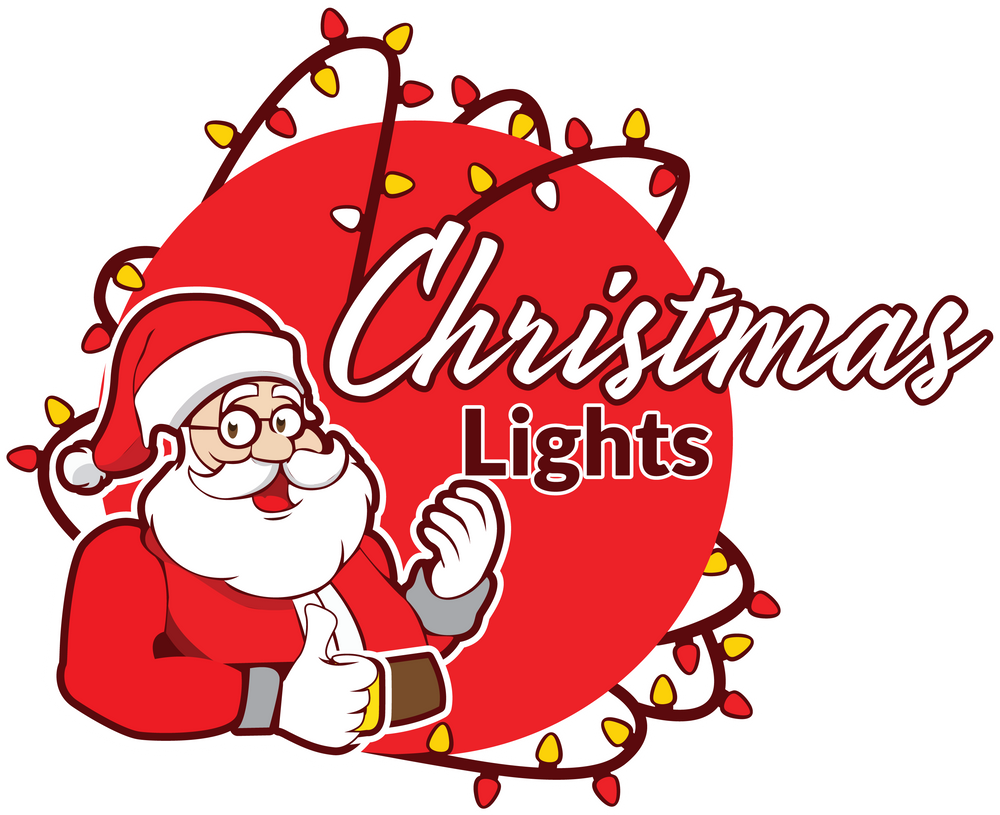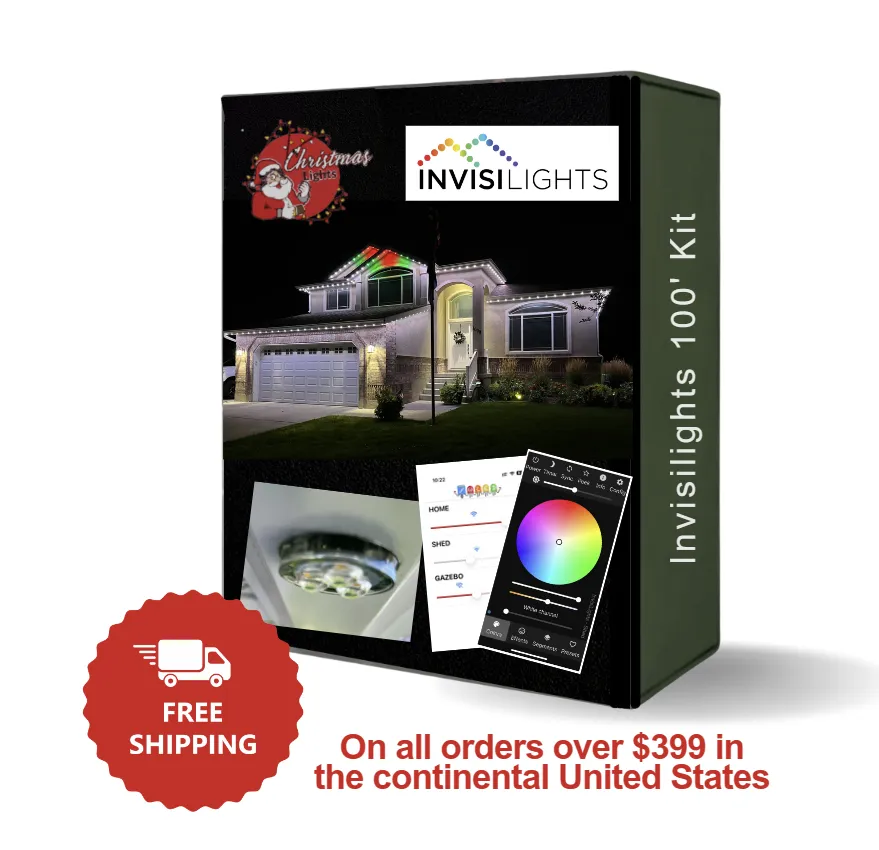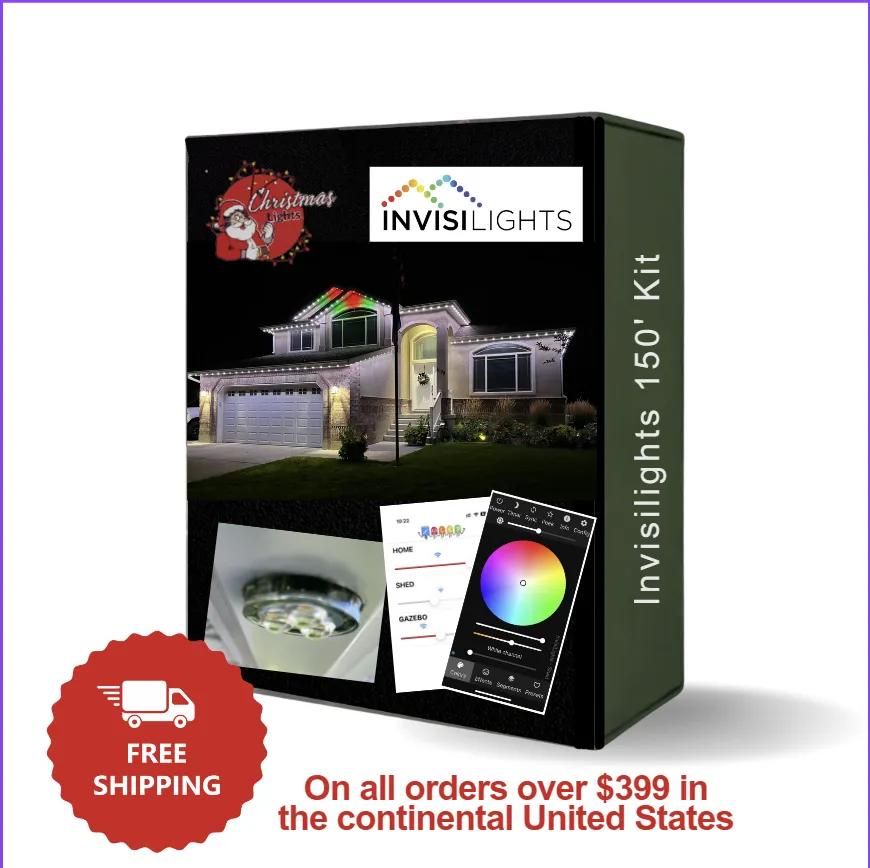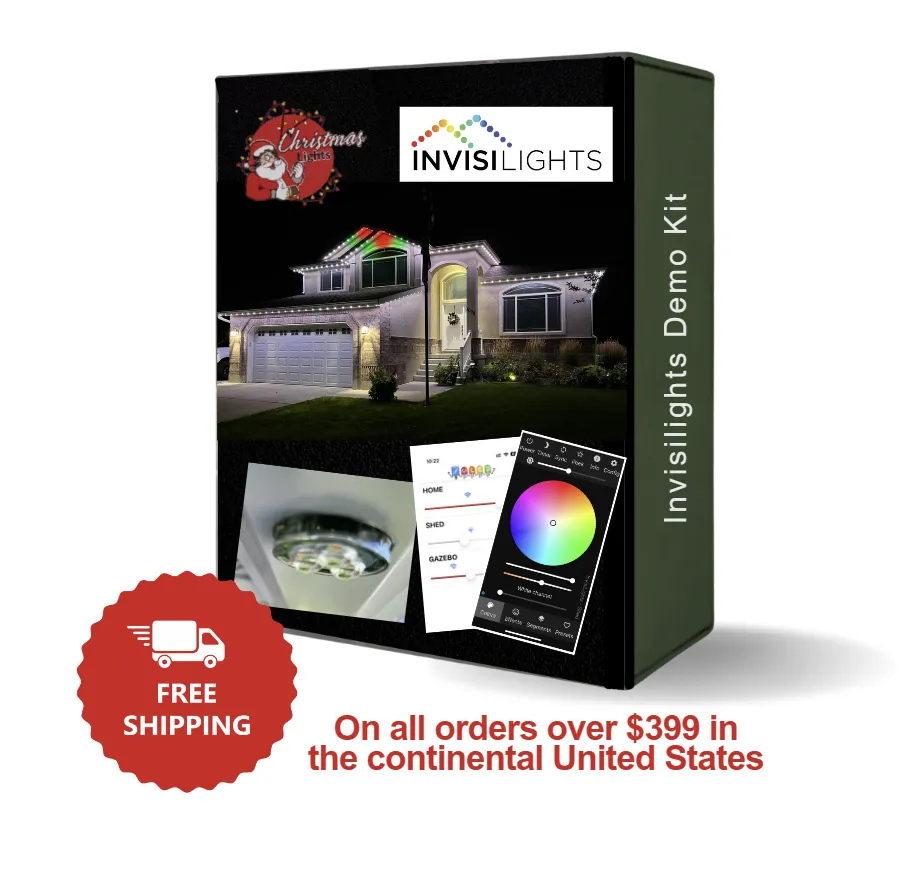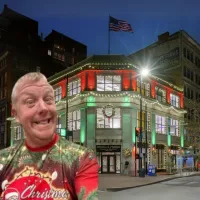Invisilights
Permanent Holiday Lighting
Customizable Lights for Any Event
WHAT YOU NEED TO KNOW BEFORE ORDERING
Total Linear footage of the installation.
This should include footage of lights and channel along with any Extensions or jumps you'll need to make
Where your controller box will be located
This is the most important step to planning out an installation, Without knowing where the controller will be you'll have no way to know the right materials to buy when it comes to extensions and accessories.
What Voltage system you want to use 24V or 36V
This is a decision you will make based on convince and efficiency, the most important factor with this will be the footage of each lighting run. If the total footage of a run is over 100' you'll need to either power inject on that run or switch to the 36V system that can go up to 200' before needing power injection.
Draw a Map
By mapping out the installation you'll be able to better understand and plan out the install giving you a better idea of what all you'll need to purchase to complete the job.
take the measurements from your map and add up the total number of materials you'll need.
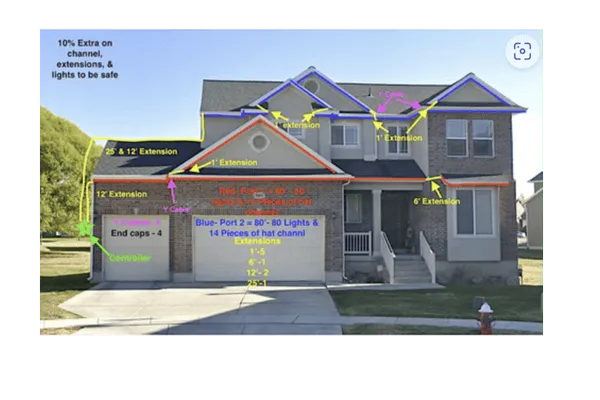
For the Map out example above the total material breakdown is:
System Voltage: 36V
Color of channel: Cameo
Channel Type: Hat
Total Lighted Footage: 160'
Power injection: NO
Controller: 1
Channel: 27- 6' sticks
Screws- 200
Lights: 175
1' extensions-7
6' Extensions-2
12' extensions-2
25- extensions- 1
Y Cables- 3
End caps- pack of 10
Absolute necessities
-Controller
-Lights
-Channel
-Screws
-Extension cables
Other Accessories
-Y Cable
-End Caps
- Signal boosters
-Power injection material
When would you need to power inject?
The controller will come with 3 outputs for your lighting runs, each 36V output can do a Max of 200', the 24V system can do a max of 100'. After that max you'll need to inject power. After you do so you can go an additional 100' with the 24V or 200' with the 36V system.
Power injection is needed due to voltage drop, voltage drop happens due to the length traveled away from the power source along with the gauge of the wire. due to the gauge of wire the lights and extensions run on it drops in voltage enough at 100' with the 24V system and 200' with the 36V system to effect the lights performance requiring a addition of power (Power Injection)
Materials needed for power injection 36V
Power injection pig female pig tale
Power injection Extension cables
Power injection T Cable.
Materials needed to Power inject 24V
16/2 - 12/2 Low voltage landscaping wire
Cut and Splice T cable
Water Proof Wire connectors
Discover the Transformative Power of Invisilights: Expertly Installed Permanent Lighting Solutions
Enhance your installation offerings with Invisilights, the premier permanent lighting solution designed for seamless integration into any property’s exterior architecture.
Crafted with high-quality aluminum channels and advanced LED technology, Invisilights delivers durability and superior energy efficiency—key selling points for your clients seeking long-lasting, cost-effective lighting solutions. Our system not only provides brilliant illumination but also boosts the aesthetic appeal and functionality of any home.
Offer your clients peace of mind with our robust 5-year warranty, ensuring reliable performance and minimal maintenance needs. This warranty supports your commitment to quality and customer satisfaction, making it easier for you to sell and install with confidence.
Our flexible, programmable system allows you to meet any client’s specific desires—from subtle accents to full-scale holiday displays—making it an adaptable choice for various applications. With Invisilights, you can cater to a wide range of preferences and needs, increasing your market reach and customer retention.
Choose Invisilights for your installations and add a transformative product to your portfolio that will impress clients and ensure your services remain in demand for years to come.
Frequently Asked Questions
What exactly comes in the 150' InvisiLights permanent outdoor lighting kit?
The InvisiLights kit is comprehensively equipped to ensure you have everything you need for installation. Each kit includes:
27 sticks of 6-foot Aluminum Channel to house and protect the lighting elements.
150 feet of dynamic RGBW LED Lights, which includes 23 sets of 6-count and 14 sets of 1-count lights, allowing for extensive coverage and diverse configuration options.
2 Data Boosters to enhance signal strength across the lighting installation, ensuring consistent control and color output.
A 320W Power Supply capable of supporting up to 190 puck lights, providing ample power for even the most extensive setups.
1 GFCI Outlet Adapter to ensure safe outdoor electrical connections.
1 Controller that allows you to manage and customize the lighting effects easily.

Will I need any additional components besides what's included in the Invisilights permanent lighting kit?
While the Invisilights kit comes with all the essential components for a standard installation, there are a couple of scenarios where you might need additional items:
Jumper Wires: Depending on the layout of your installation and the number of gaps or 'jumps' between the sections of lights, you may require jumper wires. These wires help bridge the gaps without losing the continuity of the light sequence, ensuring a smooth and uniform display across more complex architectures.
Data Boosters: If any section of your lighting setup is more than 15 feet away from the control box, additional data boosters will be necessary. Data boosters help maintain the integrity and brightness of the lights over longer distances, ensuring consistent performance throughout your installation.
Can I choose the color of the aluminum channel for my InvisiLights kit?
Yes, you can select your preferred color for the aluminum channel to match your home’s exterior or personal taste. Please make sure to specify your color choice in the notes at checkout when you place your order.
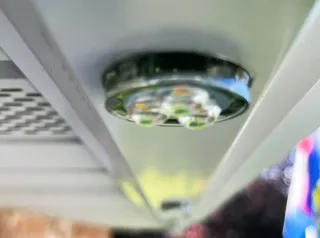
How do the included components of the InvisiLights kit enhance the lighting system?
Each component in the InvisiLights kit plays a crucial role in creating an effective and stunning lighting display:
Aluminum Channels: Provide a durable, weather-resistant housing for the LED lights, which helps in maintaining a clean and nearly invisible look during the day.
RGBW LED Lights: Offer vibrant, full-spectrum color and white light combinations, making it perfect for any occasion from festive holidays to elegant ambient lighting.
Data Boosters: Ensure that the signal remains strong across longer distances, which is crucial for larger installations.
Power Supply: Designed to efficiently handle the energy needs of the system without overload, ensuring safety and durability.
GFCI Outlet Adapter: Adds an extra layer of safety by protecting against electrical shorts and surges, particularly important in outdoor settings.
Controller: Provides the flexibility to customize and control the lighting sequences, colors, and patterns right from your smartphone or controller, adding convenience and advanced functionality to your lighting system.
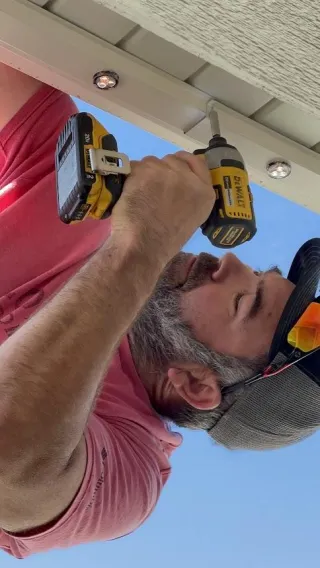
Can I use Invisilights year-round?
Absolutely! Invisilights are designed for versatile use throughout all seasons. Whether you're celebrating a special occasion, setting a mood for a party, Love your favorite sports team, or simply enhancing your home's ambiance, our lighting systems provide the perfect solution for any event, big or small.
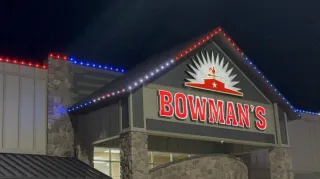
Can I set timers and events for Invisilights?
Yes, Invisilights feature advanced programmable settings that allow you to schedule lighting for specific events and automate timers. This functionality ensures that your lighting preferences are perfectly aligned with your lifestyle, turning on and off at predetermined times without any manual intervention.
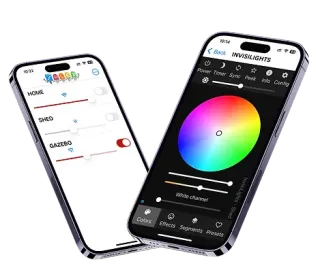
Is it possible to achieve warm or soft white with Invisilights?
Absolutely, Invisilights are equipped with RGBW technology, which includes a dedicated white LED alongside the standard red, green, and blue LEDs. This addition allows the system to produce authentic warm white, soft white, and various other shades of white with greater accuracy and intensity compared to traditional RGB systems. This capability ensures that you can effortlessly tailor the lighting to fit the desired ambiance and aesthetic of any environment, providing precise control over both vibrant colors and the subtlety of different white tones.

How do you ship your product?
Our products are shipped directly from our warehouse using reliable shipping carriers to ensure timely and safe delivery. Each product is securely packaged to prevent damage during transit, and we provide tracking information so you can follow your order’s journey to your doorstep.
Where are the controller and power supplies installed?
The controller and power supplies for Invisilights are typically installed in an accessible location such as a garage or utility room. These components connect to your home’s WiFi network, allowing seamless control over the lighting system via our user-friendly mobile app.
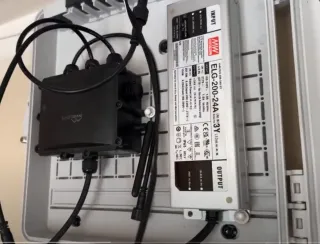
How long do Invisilights last?
Invisilights are engineered to last, with each LED bulb boasting a lifespan of over 50,000 hours. Given a typical usage of 10 hours per night, this translates to approximately 5,000 nights. This means your Invisilights could illuminate your home's exterior for nearly 14 years under these conditions, ensuring that your investment not only adds beauty but also long-term value to your property.
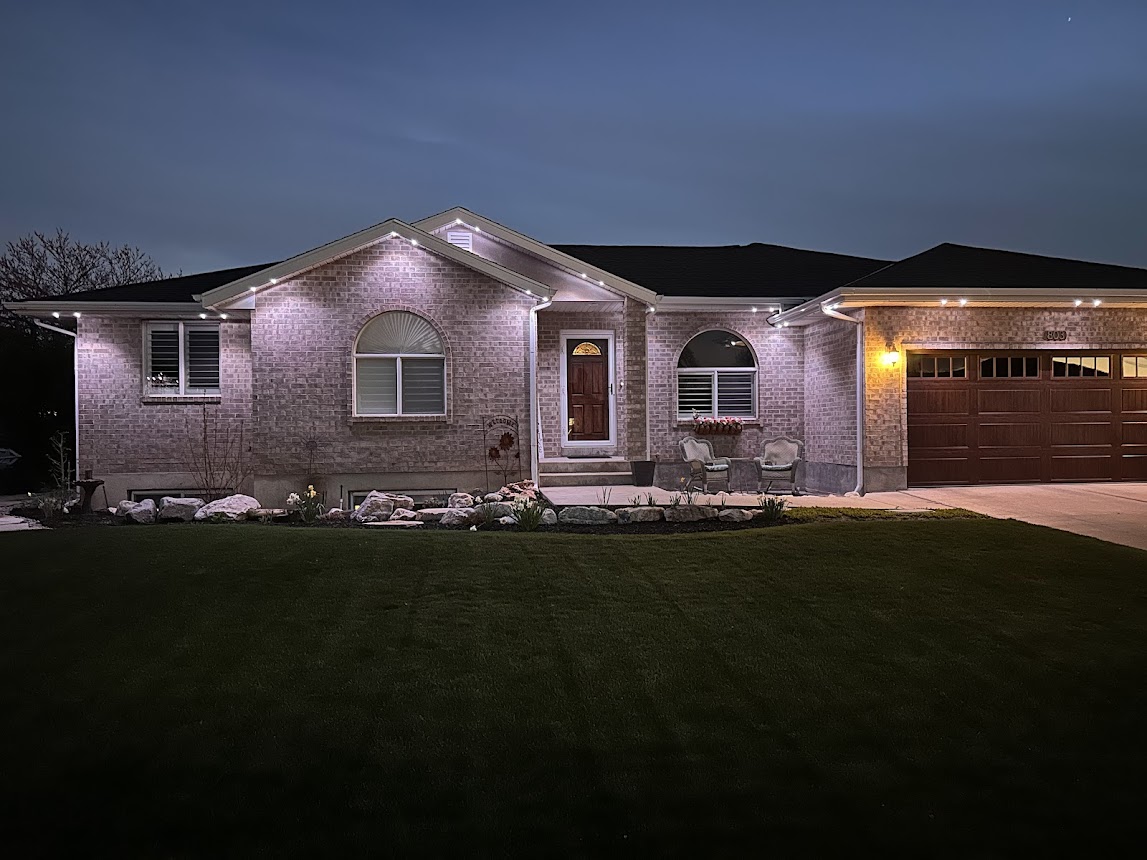
Are Invisilights dimmable?
Yes, all Invisilights are fully dimmable. This feature allows you to adjust the intensity of the light to suit various occasions, from a soft glow for a romantic evening to bright, vibrant colors for a festive celebration.

What types of custom channels are available?
Invisilights offers two types of custom channels, available in 40 different colors, ensuring a nearly invisible installation. These channels are designed to blend seamlessly with your home’s architecture, providing discreet yet effective lighting.

Can I control different zones independently?
Yes, the Invisilights system supports multiple zones which can be controlled independently or synchronized. This functionality allows for intricate lighting designs that can vary across different areas of your home, enhancing the overall impact and utility of your installation.

What is outdoor permanent lighting?
Permanent lighting refers to architectural-grade lighting systems that are installed permanently on your property to provide year-round illumination.
How does permanent lighting differ from traditional holiday lighting?
Unlike traditional holiday lighting, which is typically temporary and used only during specific seasons, permanent lighting is installed once and can be used throughout the year for various occasions
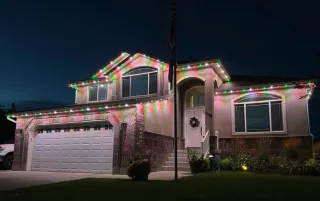
Discover Expert Tips on Our Blog

How to Quote Christmas Lights in 2025
The Christmas lights installation season is here, and installers across the country are closing significant contracts. The difference between those generating $50,000 and those reaching $500,000+ isn't technical skill or better equipment—it's how they quote jobs and what they believe they're worth. This comprehensive guide reveals the quoting strategies that separate struggling installers from those building thriving, profitable businesses.
The Foundation: Understanding Why Customers Buy
Before discussing pricing formulas or quoting software, address the most critical question: Why does this customer want Christmas lights?
Most installers assume customers want "a beautiful Christmas light display." That's surface-level thinking that leads to commodity pricing. Dig deeper. Are they recreating childhood memories of pulling up to grandparents' home during the holidays? Are grandchildren visiting for the first time in years? Is there a holiday party this weekend? Is this someone's last Christmas due to illness?
These emotional drivers justify premium pricing because you're not selling bulbs—you're selling irreplaceable memories and magical experiences. A 17-year-old installer in rural Georgia recently closed a $2,400 job at $10 per foot by understanding this principle. If a teenager in middle-of-nowhere Georgia can command premium pricing, the "my area won't pay that" excuse evaporates.
When customers understand you're creating something meaningful rather than just hanging lights, price objections disappear. One installer turned a basic $1,000 roofline estimate into a $6,000 comprehensive display simply by listening to a grandfather talk about visiting grandchildren. That's the power of understanding emotional drivers.
The Quick Quoting Method: Measuring from Google Earth
Speed matters in this business. The faster you provide quotes, the higher your conversion rate. Here's how to measure properties quickly using Google Earth without visiting the site:
Step-by-Step Measurement Process
Enter the address in Google Earth and examine the property from all visible angles
Use the garage door as your measuring reference - standard garage doors are 16 feet wide
Calculate roofline footage by comparing visible sections to the garage door width
Add 10% "sugar" to account for measurement variance and ensure adequate materials
Example calculation: A property shows 40 feet across the front (two garage doors), plus 32 feet for the peak, plus another 20 feet on the side visible from the street. That's 92 feet—round to 100 feet with the 10% buffer.
At $8 per foot, that's $800 for the basic roofline. But stopping there leaves massive revenue on the table.
Building the Complete Quote: Add-Ons Drive Profit
The difference between a $1,200 job and a $3,000+ job is presenting comprehensive options. Every quote should include:
Essential Add-Ons
Ground Stake Lighting: Measure the pathway from sidewalk to entrance. A 40-50 foot pathway at $8 per foot adds $320-$400.
Tree Wrapping: Estimate tree height by comparing to house features. A 10-foot tree at $40 per foot = $400. A 15-foot tree = $600. Most properties have 2-3 visible trees worth wrapping.
Roofline Peaks and Ridges: Don't stop at the front gutter line. Add peaks, ridges, and architectural details. These premium touches often double the visible footage while requiring minimal additional installation time.
Window and Column Wrapping: Columns at $100-$600 each (depending on size). Window frames add architectural interest and significant revenue.
Wreaths and Decorative Elements: Each wreath represents $350-$500 in additional revenue with minimal installation time.
The goal isn't nickel-and-diming customers—it's providing comprehensive options that create stunning displays. Present every option. Customers can't buy add-ons you don't offer.
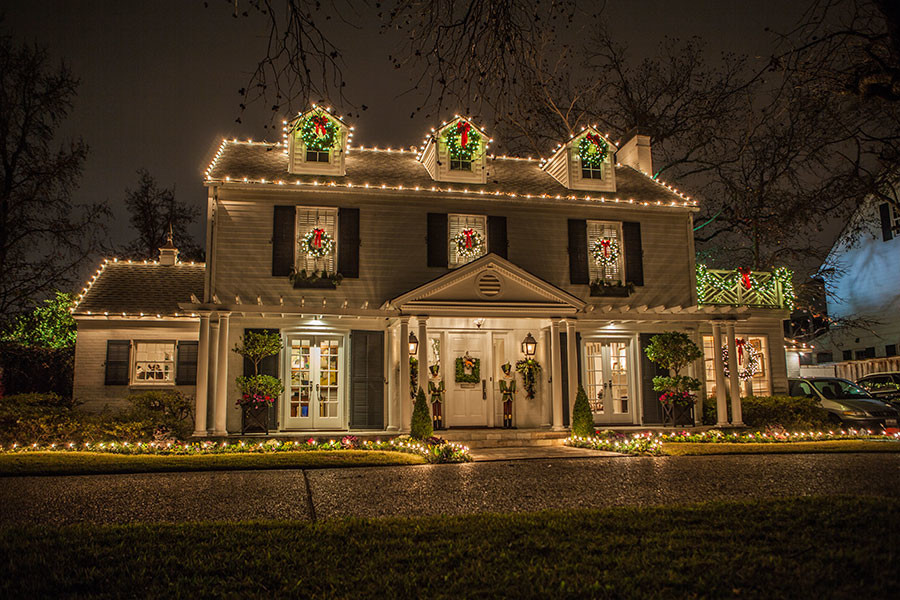
Pricing Psychology: The $6 vs. $8 Per Foot Reality
Many installers charge $6 per foot, believing higher prices won't work in their market. This self-limiting belief costs tens of thousands in annual revenue while creating unsustainable businesses.
Consider the mathematics:
At $6 per foot: A 100-foot roofline generates $600 revenue. After materials ($150), labor ($80-$100), and overhead, net profit is approximately $250-$300.
At $8 per foot: The same job generates $800 revenue. After identical costs, net profit is approximately $450-$500.
That's 60-80% more profit per job for the identical work. Scale that across 50-100 installations annually, and the difference is $10,000-$25,000 in additional profit—enough to hire help, invest in marketing, or simply earn appropriate compensation for dangerous rooftop work.
Installers charging $10-$12 per foot aren't serving different markets—they're presenting value differently and believing they deserve premium compensation.
Using Technology to Streamline Quoting
AI-Powered Content Creation
ChatGPT and similar AI tools accelerate quote creation. Instead of writing descriptions manually, use AI to generate compelling copy:
Example prompt: "I'm creating a quote for Christmas lights installation. I need a description for the 'Roofline Lights' package that emphasizes the magic and warmth, not technical specifications. Keep it professional but emotionally engaging."
The AI generates descriptions that sell experiences rather than bulbs, elevating your quotes above commodity pricing.
Design Mockups in Minutes
Tools like Canva or Holiday Home Concepts allow quick mockup creation:
Take the Google Earth screenshot
Import into design software
Add light lines digitally to show the finished product
Include before/after views
Advanced tip: Use AI image tools like Gemini to remove vehicles from driveways or enhance property appearances in mockups. Upload the image and prompt: "Remove the truck from the driveway and enhance the image quality."
CRM Systems for Professional Presentation
Platforms like Jobber or Tinsel organize quotes professionally. Create templates with:
Required line items (roofline, always included)
Optional add-ons (customers check/uncheck desired features)
Visual mockups (embedded in the quote)
Pricing that scales automatically (enter footage, price calculates)
Templates ensure consistency and speed. A quote that takes 30 minutes manually becomes a 5-minute process with proper templates, allowing you to respond faster and close more business.
The Package Approach: Forcing Higher Average Tickets
Never send a quote with only one option. Always present three tiers:
Basic Package: Front roofline only - $800-$1,200
Premium Package: Roofline + ground stakes + one tree - $1,800-$2,400
Ultimate Package: Everything including ridges, multiple trees, columns, wreaths - $3,000-$4,000
Presenting only the basic option limits customers to that choice. Presenting multiple options allows them to self-select based on budget and desire, frequently choosing mid-tier or premium options you wouldn't have offered otherwise.
This approach drives average tickets from $1,000 to $1,500-$2,000+ without pressuring customers. You're simply providing options—they decide what creates the magical experience they envision.
Overcoming the "My Area Won't Pay That" Limiting Belief
This excuse appears in every market—from Florida to California, Texas to Virginia, Maryland to Idaho. Yet in every single market where installers insist "$6 per foot is the maximum," other installers successfully charge $8-$12+ per foot.
The difference isn't the market. It's mindset.
Maryland installer: "I can't get more than $3 per foot here."
Another Maryland installer in the same market: "I'm getting $12 per foot."
Same market. Same customers. Different beliefs, different results.
An Idaho installer raised prices from $4 per foot to $7 per foot this season. His close rate dropped slightly, but revenue doubled while working half as many jobs. Less physical work, less risk exposure, higher profit—simply by believing he deserved fair compensation.
The book "Think and Grow Rich" emphasizes a fundamental truth: what you believe, you achieve. If you believe your market won't support premium pricing, you'll communicate that uncertainty in every sales conversation, ensuring customers negotiate down or choose competitors. Believe you're worth $10 per foot, and customers will too.
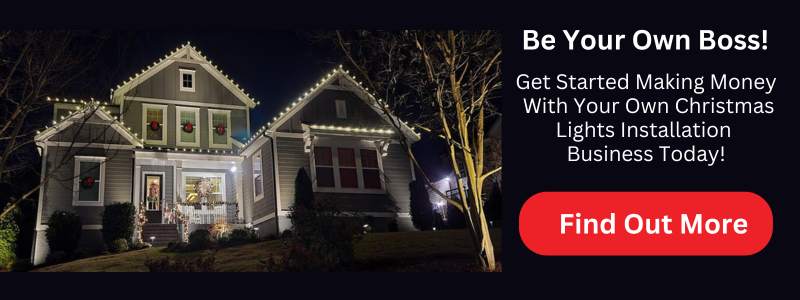
The Close Rate Reality
Expect a 15-25% close rate at premium pricing. That means 75-85% of prospects won't book. This is normal and healthy.
At $8-$10 per foot, you're attracting quality-focused customers willing to invest in professional service. Price shoppers self-select out, saving you time and frustration. Better to close 20% of leads at $2,000 per job than 40% at $800 per job—the math heavily favors premium pricing.
Installers making six figures monthly often have 15% close rates. They generate enough leads through consistent marketing that volume compensates for selectivity. This approach builds sustainable businesses rather than exhausting hustles.
Leasing vs. Selling: Building Recurring Revenue
The lease/rental model (often called "red carpet service") generates significantly more lifetime value than selling lights to customers.
The Selling Model
Charge $14-$16 per foot in year one (to cover materials and profit), then $8 per foot in subsequent years for installation only. Customers own the lights and store them.
Problems: You lose control of materials. Customers store lights improperly (tangled masses in tubs). You're liable for damaged materials you didn't create. Year two becomes low-margin labor.
The Leasing Model (Recommended)
Charge $8-$10 per foot annually. You own the lights, handle storage, maintain equipment, and provide hassle-free service.
Benefits:
Predictable recurring revenue
You control material quality
Customers pay for convenience, not equipment
Flexibility to offer color changes
If customers don't return, lights go to another property
The red carpet service emphasizes value beyond materials: "We handle everything. You never touch a ladder, store anything, or worry about repairs. If you want different colors next year, we'll swap them. It's completely hassle-free."
This positioning justifies annual fees rather than the "pay once, install cheap forever" trap that destroys profitability.

Marketing Integration: Making the Phone Ring
The best quoting system in the world is worthless without leads. To generate consistent quote requests:
Yard Signs: Deploy 100+ signs weekly. This remains highest-ROI marketing for local service businesses. Track which locations generate calls to optimize placement.
Google Business Profile: Post daily with installation photos, customer testimonials, and project updates. Respond to every review immediately. A robust profile drives local search visibility.
Facebook Advertising: Expect $15-$30 per lead. Budget $50-$100 daily now, scaling to $100-$200 daily from November onward. Include budget qualifiers in ads: "Starting at $600" filters out customers expecting $100 jobs.
Social Media: Post consistently showing finished installations, happy customers, and behind-the-scenes content. Every post is a passive salesperson working 24/7.
Referrals: Request reviews systematically after every installation. Reviews drive future organic leads more effectively than any paid advertising.
The formula is simple: generate leads, quote quickly with premium pricing, present comprehensive options, close 15-25%, and repeat. Do this consistently, and six-figure seasonal revenue becomes the norm.
Addressing Common Objections
"I already have lights, I just need installation": Politely decline or charge premium for liability. You don't know how customers stored materials, whether they're damaged, or if they meet safety standards. Your insurance likely doesn't cover installing customer-owned materials. Better to lose this job than accept liability for substandard materials.
"Your competitor charges $6 per foot": "I appreciate you sharing that. Our pricing reflects professional-grade materials, comprehensive insurance, experienced crews, and guaranteed satisfaction. If lowest price is your primary concern, we might not be the best fit. But if you want a premium, hassle-free experience with stunning results, we're perfect for you."
"Can you do it cheaper?": "We've priced this to deliver exceptional value while ensuring our team can provide the quality you deserve. Rather than reducing price, we could modify the scope—perhaps focusing on the front of your home this year and adding more next year?"
Confidence in your pricing eliminates most objections. Uncertainty invites negotiation.

What's a realistic first-year revenue target for new installers?
First-year installers executing recommended strategies—premium pricing, comprehensive quoting, consistent marketing—can realistically generate $30,000-$100,000 in a partial season starting in October. Those beginning earlier in the year and building strong Google Business Profiles can reach $50,000-$150,000. These aren't outliers—they're normal results for installers who believe in their value and market consistently.
How should I price columns, bushes, and trees?
Columns: $100-$600 each depending on height and complexity. Trees: $40 per foot of height ($400 for a 10-foot tree, $600 for 15-foot). Bushes: Estimate strands needed, charge $30-$40 per strand. For three strands per pillar across three pillars, charge $120-$150 per pillar or $360-$450 total for all three.
Should I pre-qualify leads or quote everyone?
Both approaches work. Pre-qualifying saves time once you're receiving 100+ leads weekly. Early in the season or with manageable lead volume, quote everyone. Some "unlikely" prospects surprise you. As volume increases, implement qualification: "Our packages start at $900 for comprehensive service. Does that sound like the service level you're looking for?"
What close rate should I expect at $8-$10 per foot?
Expect 15-25% at premium pricing. This is healthy and normal. You're attracting quality-focused customers while price shoppers self-select out. Some six-figure-monthly installers close only 15% of leads—they simply generate enough volume through marketing that selectivity doesn't constrain revenue.
How fast should I provide quotes after receiving inquiries?
As fast as possible—ideally within 2-4 hours during business hours, maximum 24 hours. Speed-to-lead directly impacts conversion. Customers contact multiple installers; the first professional quote often wins. Use templates and technology to streamline the process, allowing rapid response without sacrificing quality.
Can I really charge $10-$12 per foot in my market?
Yes, if you believe you can. Installers in every market—rural Georgia, Idaho, Maryland, Virginia, Texas, California—successfully charge $10+ per foot. The limiting factor isn't your market; it's your mindset and how you present value. Start at $8 if $10 feels uncomfortable, but commit to raising prices as confidence grows.
What's the best CRM for quoting: Jobber, Tinsel, or something else?
Jobber excels at quoting, job routing, and crew management. Tinsel offers similar features with different interface preferences. For follow-up automation, Go High Level is excellent. Many successful installers use Jobber for operations and Go High Level for marketing automation, leveraging each platform's strengths. Start with one and add the second as complexity increases.

How do I respond when customers ask me to install their existing lights?
Politely decline in most cases: "I appreciate you thinking of us, but our insurance doesn't cover installing customer-owned materials, as we can't verify their safety or condition. We'd be happy to provide a quote for professional-grade lights with our red carpet service." The liability isn't worth the modest revenue, and these jobs are typically unprofitable.
When do most sales close: before Halloween or November?
Most sales close November 1st through Thanksgiving, with peak volume the week of Thanksgiving. October generates quotes and builds pipeline, but conversion accelerates dramatically in November as weather changes trigger holiday mindset. Don't be discouraged by slow October closings—that's normal seasonal pattern.
What's the fastest way to increase average ticket from $1,000 to $2,000?
Present comprehensive packages with every quote. If you're only quoting rooflines, you'll never exceed $1,200 average tickets. Add ground stakes, trees, wreaths, columns, and ridge lighting to every quote as optional add-ons. Customers can't buy options you don't present. This single change—presenting everything rather than basic options—drives average tickets from $1,000 to $1,500-$2,000+ without pressuring anyone.
Copyright ©2025 All Right Reserved website designed by christmaslights.io
Terms of Service / Privacy Policy
Have questions or need assistance?
Contact us at (855)619-LITE
